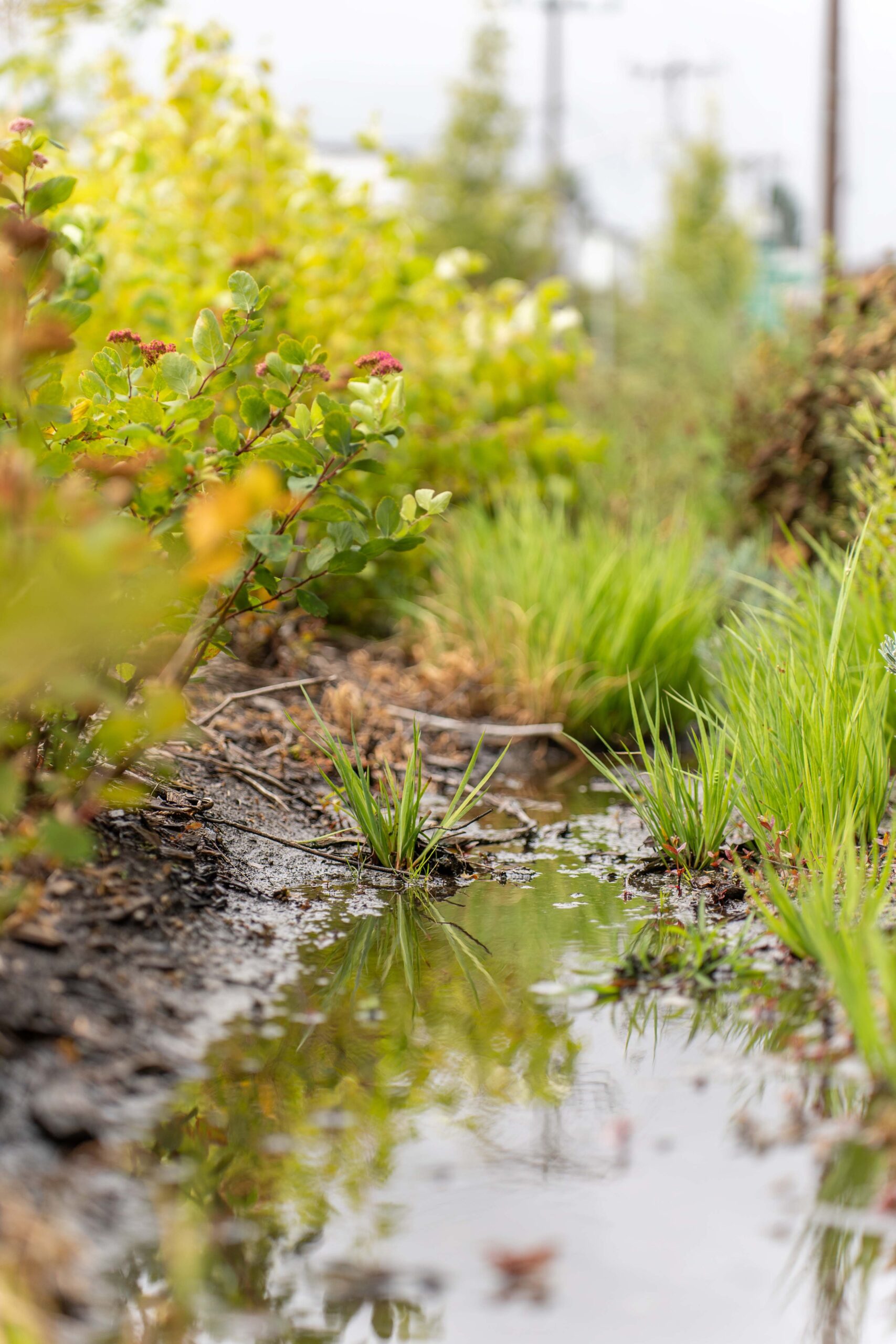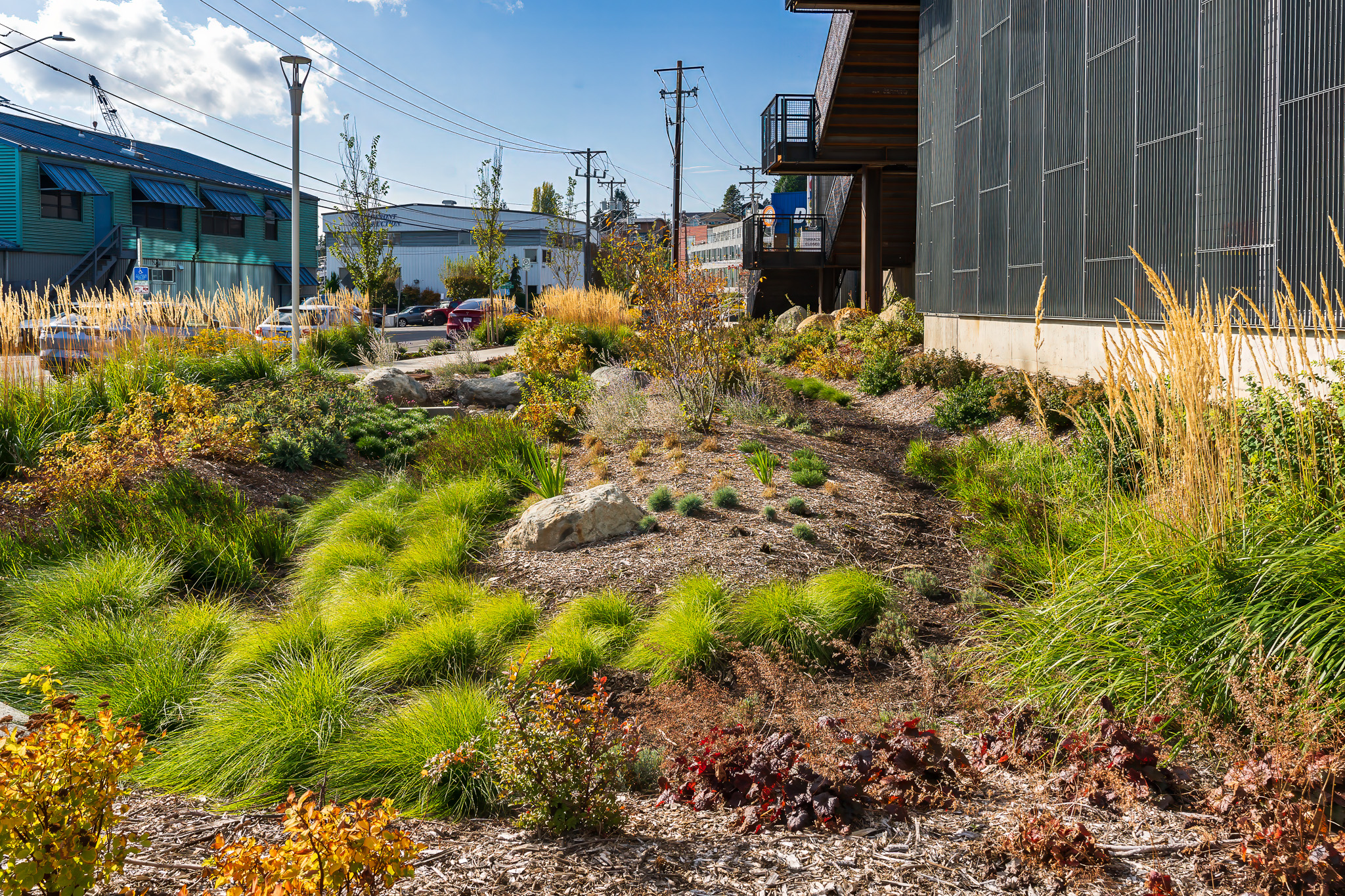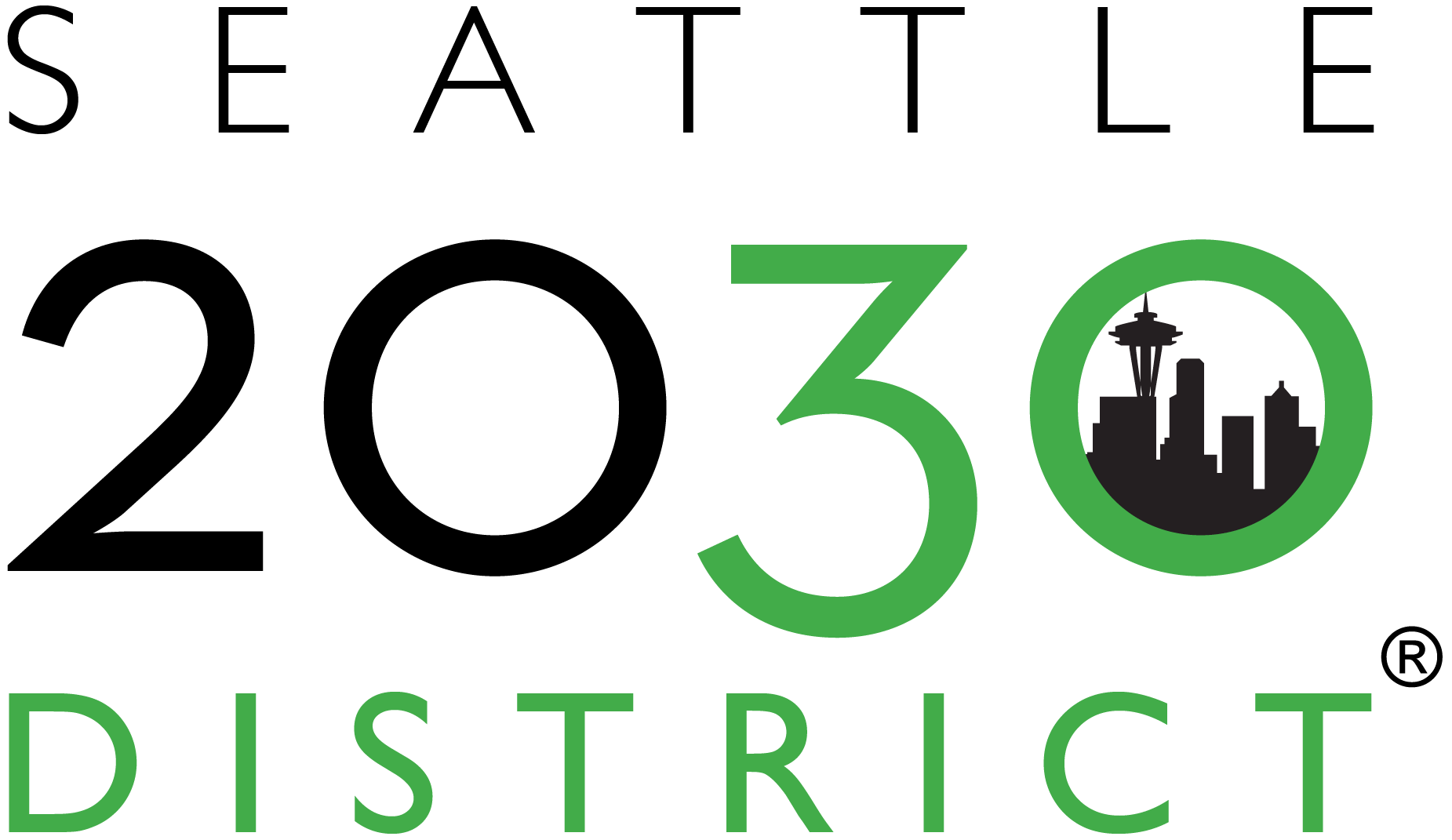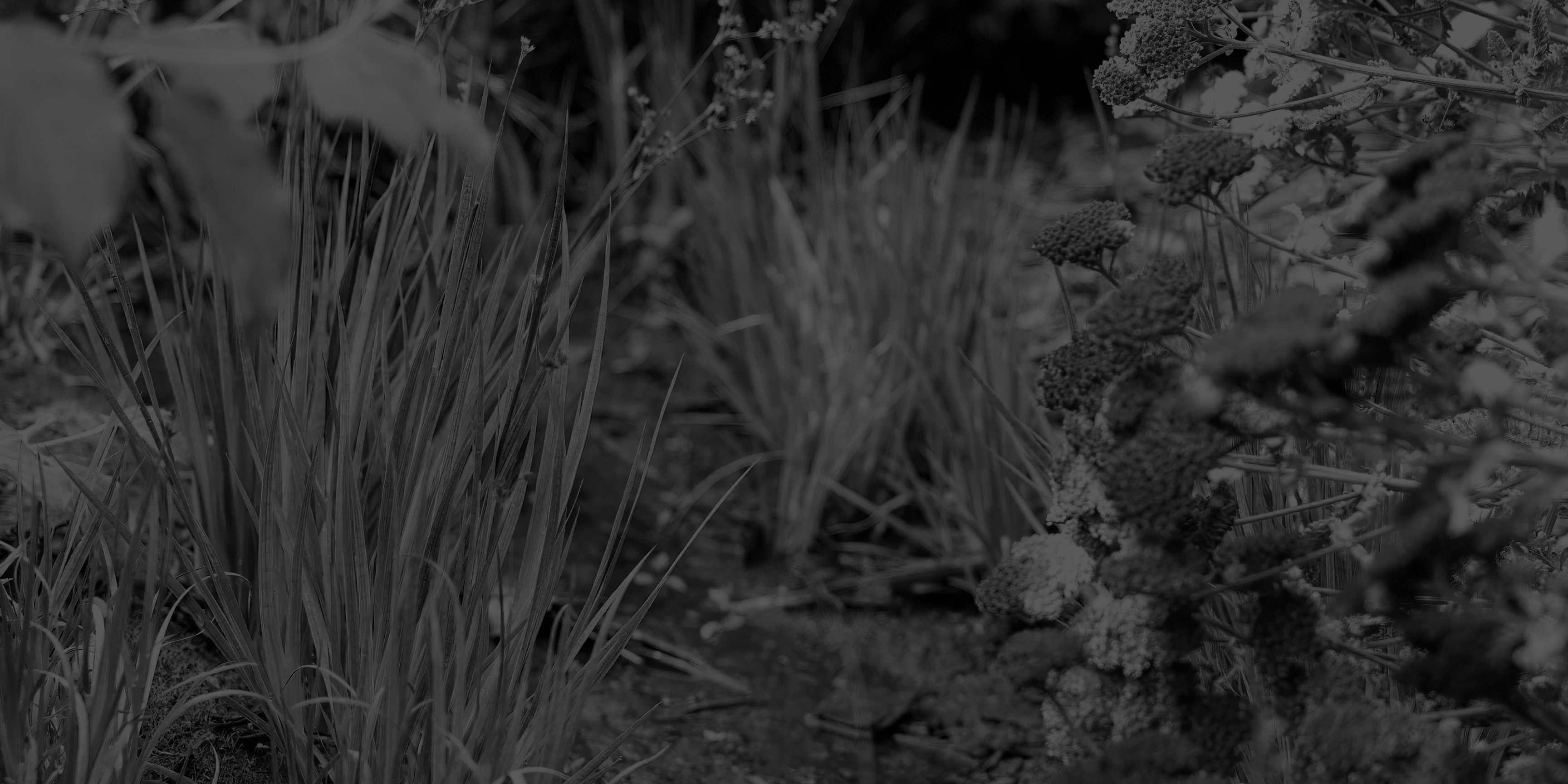Designing with Nature and SPU’s Beyond Code Program
What takes a relatively small percentage of a new development’s budget yet makes a significant impact on tenants, owners, visitors, and our environment? The landscape design of a site. It’s often a first impression and can have a lasting impact on the success of any new development.
Here in Seattle, many of us are familiar with the hurdles of developing within a tight urban context, where the area devoted to planting and nature is often minuscule. However, many underestimate the impact these spaces can have. Here is how to optimize the greenspace on projects and a new partnership opportunity with Seattle Public Utilities to maximize the impact every project can have.
Landscapes should feel vibrant and connect people to nature.
As a landscape architect who has spent much of my career working on urban developments, I’ve found that the most effective way to incorporate landscape with a slew of benefits and return on investment is by utilizing green stormwater infrastructure (GSI). In practice, GSI refers to stormwater cleaning and management that is done by soil and plant-based infrastructure, not by structures such as catch basins and vaults. The more we can mimic the patterns found in nature, the easier it can be to maintain a thriving urban environment. By using GSI rather than buried pipes, we can make a site feel vibrant and connect people to nature, while also increasing property values and marketability.

Designing landscapes that closely mimic natures regular processes for regenerating its environment can easily be integrated into an urban landscape. Here are a few of my strategies:
Whenever possible consolidate plantings into the largest, contiguous planters you can fit. Go with one big statement rather than multiple small gestures. Nature thrives and can build more complex system in larger areas with connected drifts of plants that create habitats that better support healthy eco-systems.
Take advantage of opportunities the site already provides. For example: allow a downspout to open directly into a planted swale. Consider the structures surrounding your site as work within their effect on the landscape. Buildings can be seen as a tree canopy, and your landscape the forest floor. Use the old maxim: right plant, right place, and plant accordingly.

Northlake Commons Regional Swale
Embracing water on new developments.
Seattle’s stormwater code requires new construction to clean and/or slow the stormwater that falls within the property. The newly launched Seattle Public Utilities Beyond Code Program aims to infuse projects with additional funding to tackle management of roadway runoff as well. The solutions can include scaling up a project’s onsite stormwater facilities to accommodate additional water or incorporating GSI in the right of way to complement a project’s onsite solutions. Now, both public and private interests are focusing on a common goal: to slow and filter as much polluted runoff as possible. Through a partnership, GSI can be a simple solution that makes the investment allocated to landscape have an ever-greater impact on our city’s water quality.
Embracing water on our urban sites can be a game-changer. The Northlake Commons Regional Swale has proven that the Beyond Code partnership can be successful and benefit both the goals of the utility and the development. Developers partnered with Seattle Public Utilities (SPU) to collect water from neighborhood roadways uphill from the site. They treated the roadway runoff in a swale located on private property, cleaning more than twice the volume of runoff required of the parcel by code, before releasing it towards the lake. This resulted in a highly cost-effective way for SPU to implement construction of GSI, while the added function and environmental benefits gained rewarded the developer, building tenants and the public.
Growing Momentum
As Seattle continues to grow and redevelop underutilized sites, addressing pollution at a city scale will help unburden our city infrastructure. Turning to the city and county for support can be a collaborative solution to a collective problem. From poor water quality to dwindling salmon populations to flooded basements and road closures during heavy rainfall, we all feel the impacts. Fortunately, new developments can take measures to mitigate these pressing issues at a scale and speed that will have a clear impact.
With a growing number of built examples of these collaborative approaches, the positive ripple effects continue to make the case for implementing GSI on every project. With trust in the relationships and solutions available to solve our collective issues involving stormwater, we can increase the impacts we have on our urban environment. What GSI designs will you add to your next project?
About the Author

Clean water advocate Rachael Meyer is a leading voice in the Green Stormwater Infrastructure movement and has been at the forefront of developing partnerships between private developers and public utility departments. As a Landscape Principal and Director of Sustainability at Weber Thompson, Rachael oversees the firm’s sustainability initiatives focusing on health and wellbeing, carbon reduction, and stormwater management.

